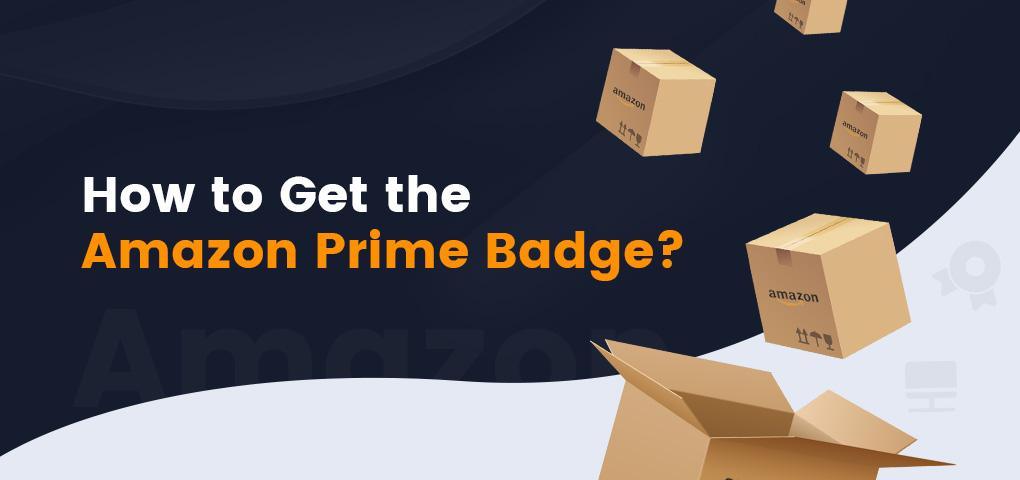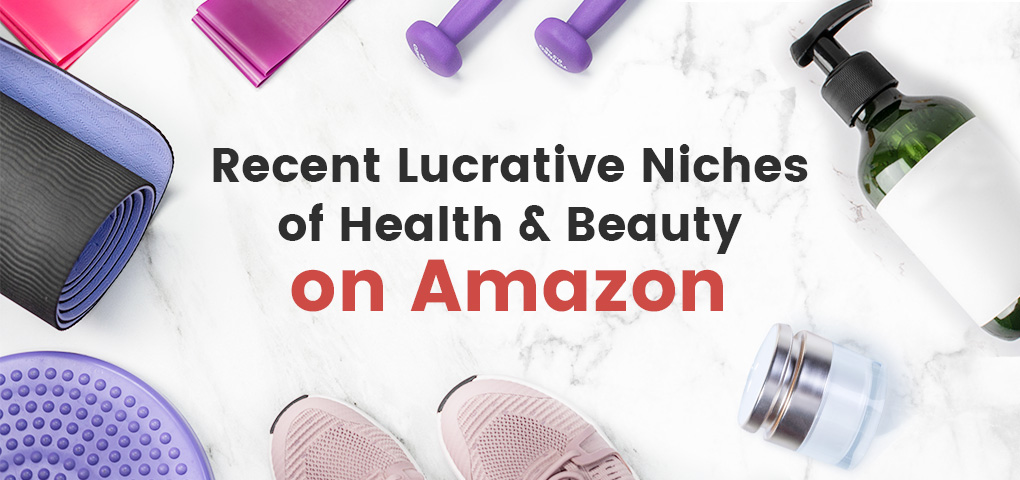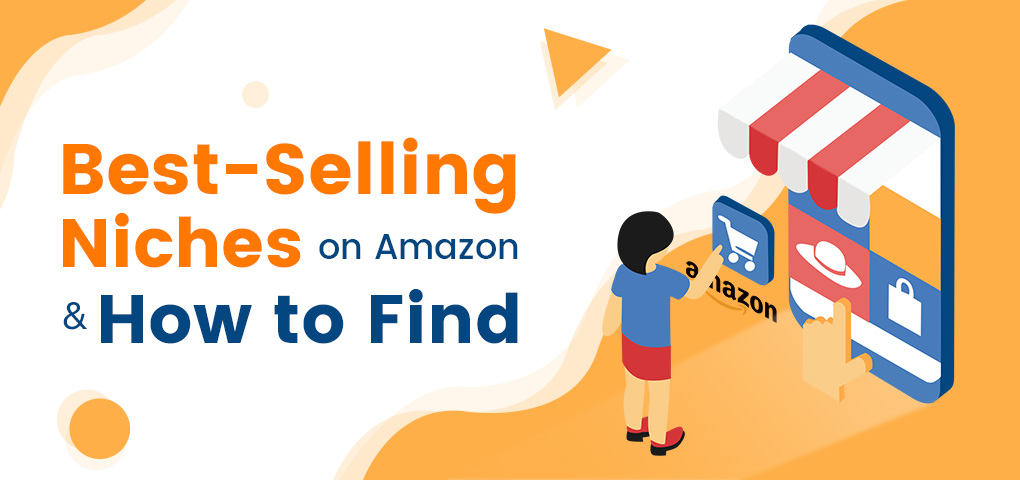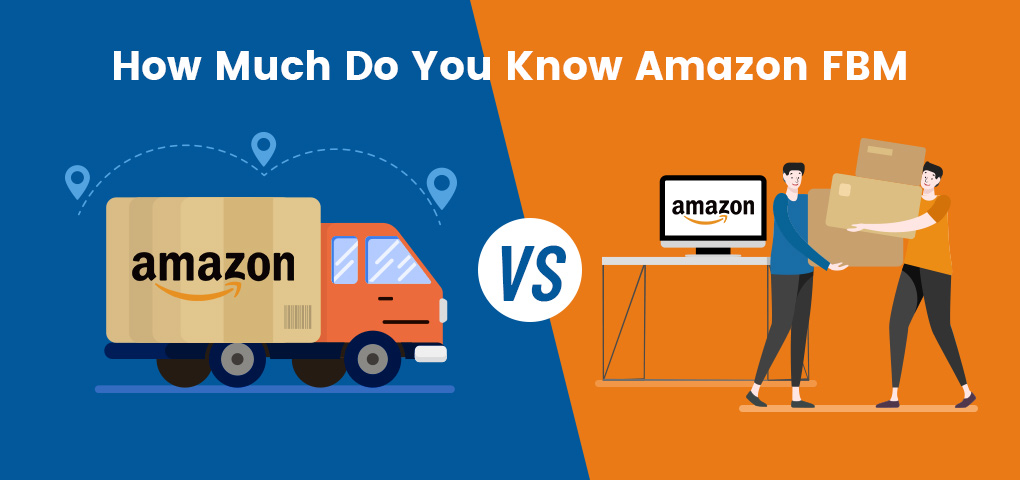A lot of Amazon sellers are eager to earn the Amazon prime badge on their products. Why not! Amazon prime badge comes with numerous benefits that cannot be ignored. The Prime badge can increase your customer base; it denotes trust to buyers; it can add to your sales; it can reduce your marketing efforts, to name a few. For sellers interested in getting the Prime badge on their products, there are several ways to sell on Amazon Prime. In this post, we will introduce how to become an Amazon prime seller.
Ignore the misconception that using Fulfillment by Amazon (FBA) is the only way to get the Amazon Prime badge. The purpose of writing this article is to educate you that there are other ways. Earning the Prime badge isn’t limited to using FBA alone; there are three ways to sell your products on Amazon. Interestingly, you can learn how each method works, the benefits & drawbacks of each method, and how to choose the right one for your business. Wondering how to sell via Amazon prime? Read on!
Why sell on Amazon prime
Before learning how to sell as Amazon prime, you need to know why people are eager to become Amazon seller fulfilled prime. There are enormous benefits attached to selling on Amazon Prime. To name a few, consider the following reasons you need to sell on Amazon prime.
- Shoppers are always on the lookout for brands with the Prime badge before they buy. This is because Prime members offer faster shipping and shoppers cannot tolerate anything less.
- Prime products usually have a higher search ranking than non-Prime products. The higher the search rank, the higher the traffic.
- By earning the Prime badge, you are going a step further to winning the Amazon Buy Box.
- Amazon Prime products are known to outperform the competition. For private label sellers, earning the Prime badge can be a great way to compete against thousands of similar products.
- Overall, Amazon Prime members shop more frequently and spend more annually, which translates to increased sales by the end of the year.
Ways to sell on Amazon prime
There are three known ways how to be Amazon prime seller; they are: FBA Fulfillment by Amazon, SFP Seller Fulfilled Prime, and VC Vendor Central.
1. Fulfillment by Amazon (FBA)
Fulfillment by Amazon is the most popular way to sell on Amazon prime. It is a highly automated, easy-to-access, and comprehensive logistics network. This service includes everything from warehousing to picking, packing to shipping, and returns to customer service. Here’s how it works:
Step 1: You integrate the FBA program with the Amazon marketplace.
Step 2: Send your product inventory to an Amazon warehouse.
Step 3: When you get an order, Amazon processes and ships the order to your customer.
Products that are listed in FBA automatically get the Prime badge. It’s that simple!
Benefits
- Amazon handles fulfillment, shipping, and customer service for you.
- FBA is fully automated and can be integrated with the Amazon marketplace.
- Amazon can easily remove bad customer review that relates to fulfillment or shipping,
- Since your listing will be tagged “Fulfilled by Amazon” and comes with the Prime badge, customers will have the confidence to shop from you.
- The cost of allowing Amazon ships and fulfill your orders might be less expensive than when you do it yourself.
Drawbacks
- You can only ship small quantities to multiple locations unless you are willing to pay an additional fee for the “Inventory Placement Service”.
- FBA can incur unexpected fees like long-term storage fees.
- Amazon will not do inventory management, stocking, and order processing on your behalf– you will DIY.
- Errors are bound to happen. A few times, Amazon can mix your inventory with other sellers’ and it could be costly to your brand.
- Depending on the cost structure, FBA can be expensive compared to DIY shipping;
Who should use FBA?
- Those who want to get the Prime badge can use FBA.
- FBA is recommended for sellers who want to reduce shipping times to farther destinations.
- FBA is ideal for every Amazon seller.
- Those who record few sales through other channels can also use FBA.
- Those who are unable to meet the standards required for Seller Fulfilled Prime can use Fulfilled by Amazon.
2. Seller Fulfilled Prime (SFP)
Want to know how to sell via Amazon prime, you may consider Amazon’s SFP program. SFP is another sure way to get the Prime badge on their products. Only this time, the seller is allowed to retain control of inventory and handle order fulfillment and shipping. Here’s how it works:
Step 1: You first have to qualify for the SFP membership.
Step 2: Stock your warehouse with your own products.
Step 3: When you get an order, you will process and ship the order via Amazon’s approved carriers or a 3PL (a third-party logistics service provider).
To qualify for SFP the seller;
- Must use approved carriers
- Must offer same-day shipment
- Must buy shipping labels through Amazon
- Must consistently meet certain requirements and performance metrics
If you sell on your own website or other marketplaces and you handle fulfillment yourself, then you can apply for SFP memberships.
Benefits
- SFP sellers have more control over refunds and returns since they handle fulfillment.
- You can sell products that are ineligible for FBA e.g. products with short expiration dates or products that have temperature control.
- SFP sellers have total control over your inventory and fulfillment.
- Sellers are allowed to use multiple fulfillment methods, for instance, they can ship smaller products via FBA and bulky products via SFP.
- Since SFP sellers own warehouse(s), they won’t pay FBA shipping and handling fees.
- SFP sellers can make huge profits especially when they ship heavy/bulky items at once.
Drawbacks
- SFP’s stringent requirements can discourage sellers from applying. Sellers will have to sell at least 200 times within a trial period of 5 – 90 days. They also have to qualify for Premium Shipping.
- SFP sellers invest hugely in inventory management, warehouse maintenance, software, and employees.
- In addition to maintaining Amazon’s SFP criteria, sellers will need to operate a high-quality shipping service, fast order fulfillment, and pay additional expenses.
- Any SFP seller who falls short of the required standards will have no choice but to opt for FBA to retain the Prime badge.
Who should use SFP?
- If you already have a warehousing service and can handle shipping in line with Amazon’s standard, you can opt for SFP.
- Since the seller will be shipping from his own warehouse, he can customize shipping to suit the customers’ preferences.
- SFP bests suit those selling heavy/bulky items or items that are prohibited by FBA or fragile/hazardous materials or items that need refrigeration.
3. Vendor Central (VC)
Vendor Central is completely different from FBA and SFP. In this fulfillment method, Amazon vendors sell bulk items at wholesale prices to Amazon and not to shoppers. However, manufacturers and brands participating in Vendor Central are recruited by Amazon. Amazon will handle everything from selling to customer service, logistics, warehousing, fulfillment, and returns. Products from Vendor Central will all have the Amazon Prime badge.
Benefits
- As a vendor, you don’t have to handle all the business-to-consumer sales. Amazon does it all.
- Vendor Central is an easy way of earning the Amazon Prime badge. You don’t need to sell to the public, just supply to Amazon and that’s all.
- As an Amazon vendor, you will have access to Amazon Vine reviews, Subscribe & Save, A+ Content, and other powerful marketing tools.
- Customer service and returns will not be your headache.
- Products from Vendor Central are labeled, “Ships from and sold by Amazon.com”. This increases credibility and sales.
Drawbacks
- Before becoming a Vendor, Amazon will first need to invite you.
- Amazon may drop prices below your MAP (Minimum Advertised Price).
- Amazon decides the type and quantity of products to buy from you. As such, order volumes may be discouraging.
- Vendors may not have the privilege to negotiate pricing and regulations with Amazon. Hence, lower a profit margin.
- If you sell products that Amazon doesn’t want to stock, you will need to go through a third-party seller or sell directly to consumers which will increase your marketing budget.
- To fulfill Amazon’s purchase orders, you will need good logistics. Be prepared to ship small units to multiple locations.
Who should use Vendor Central?
- This program is ideal for brands who are invited to sell directly to Amazon under the Product Availability Policy (“Standards for Brands Selling in the Amazon Store”).
- VC is a good fit for brands and manufacturers who prefer to sell wholesale only.
- Brands that find it challenging to sell directly to consumers can opt for Vendor Central.
Who needs to sell on Amazon prime?
Now that you know how to become a prime seller on Amazon, which method will you settle on – FBA, SFP, or VC?
Prime is a necessity if:
- You are competing for Amazon Buy Box or a third-party branded product that has high competition, especially when some sellers can the Prime badge.
- You have private label products but there are other sellers selling similar products with the Prime badge. Earning the Prime badge will help you stay in the competition.
In summary, you need Prime if you are offering what others that have the Prime badge are offering
Prime is not a necessity if:
- You sell refurbished or used products such as vintage books or textbooks. Items like this don’t have too much competition; you can sell on Amazon and make profits with ease.
- Your product’s price is more competitive when compared to Prime sellers that have higher prices. This is a good condition to win the Buy Box.
- You sell bulky or heavy items that are difficult or costly to ship on Amazon, for example, heavy-duty machinery or specialized tools. Usually, these items have low sales volume so they are not suitable for FBA Vendor Central.
- You have your own branded product or own a private label with its own unique demands from buyers. You don’t need the Prime badge if you have a large customer base that must have your brand.
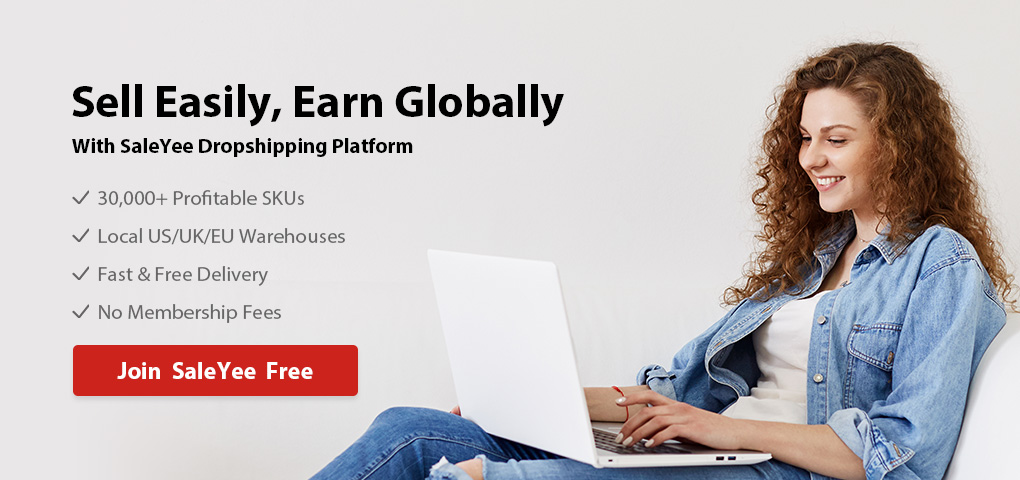
Conclusion
That’s all about how to be a prime seller on Amazon. There is no arguing that selling on Amazon Prime can have a huge impact on your sales. However, it is worth knowing that Prime isn’t the only guarantee of succeeding on Amazon. Some sellers do excellently without the Prime badge while those with the Prime badge still sell poorly. A lot of factors need to be considered before becoming an Amazon seller fulfilled prime. They include what you sell, who you sell to, demand or supply, and your marketing strategy. Once you can answer these questions, you can then determine which program is a good fit for your brand.

